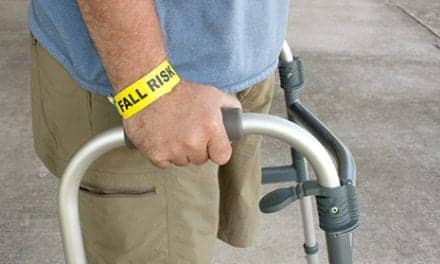Screening by physical therapists for elevated levels of fear in patients receiving outpatient rehabilitation was accurate and efficient using items from the Fear-Avoidance Beliefs Questionnaire (FABQ), according to a retrospective analysis published in the August issue of Physical Therapy, the scientific journal of the American Physical Therapy Association (APTA), Alexandria, Va.
The study suggests that FABQ screening could be useful in routine clinical practice, says APTA.
The researchers found that using the Fear-Avoidance Beliefs Questionnaire (FABQ) at intake could identify elevated levels of fear-avoidance beliefs regarding work or physical activities in patients who were receiving outpatient rehabilitation, says APTA. The FABQ, a short test, self-report questionnaire, is used to assess pain-related fear in patients with a variety of neuromusculoskeletal conditions.
According to physical therapist researcher Dennis L. Hart, PT, PhD, director of consulting and research at Focus On Therapeutic Outcomes Inc, in White Stone, Va, “Therapists do not routinely screen for elevated levels of fear in patients, although evidence suggests that identifying fear-avoidance beliefs and managing those beliefs accordingly may reduce fear and help to predict or improve outcomes.” Hart says that developing efficient and accurate screening methods is particularly important for therapists who are assuming first-contact roles in patient care.
“As more physical therapists assume a first-contact role, they will need to identify confounding conditions that could reduce the effectiveness of their management strategies in diverse patient populations,” he said, adding that “test results that indicate that elevated levels of fear would alert therapists to patients who could be fearful of activities that might be part of their therapeutic interventions. Physical therapists could then conduct further testing or modify treatment strategies for improved outcomes.”
In order to develop a screening method that was both accurate and efficient, researchers collected FABQ data from 17,804 people who had common neuromusculoskeletal conditions and who were receiving outpatient rehabilitation in 121 clinics in 26 states in the United States, says APTA.
In an effort to minimize measurement error related to short-term tests such as the FABQ, researchers used Item Response Theory (IRT) methods to analyze the FABQ items. IRT methods are psychometric techniques that help evaluate whether items mean the same thing to different respondents, also known as differential item functioning (DIF). IRT methods also help identify screening items by selecting only those items associated with the lowest measurement error related to a given level of fear.
Researchers discovered that DIF was negligible for sex, age, symptom acuity, surgical history, pain intensity, and condition severity and impairment, variables known to affect functional outcomes. Hart said that "the lack of practically important DIF allowed us to identify single-screening items that could be used to accurately and efficiently classify people with elevated levels of fear-avoidance beliefs regardless of the impairment being treated."
The researchers concluded that IRT methods can improve assessments with FABQ scales and can be used to determine single-screening items that can accurately identify people with high levels of fear at rehabilitation intake.
[Source: APTA]




